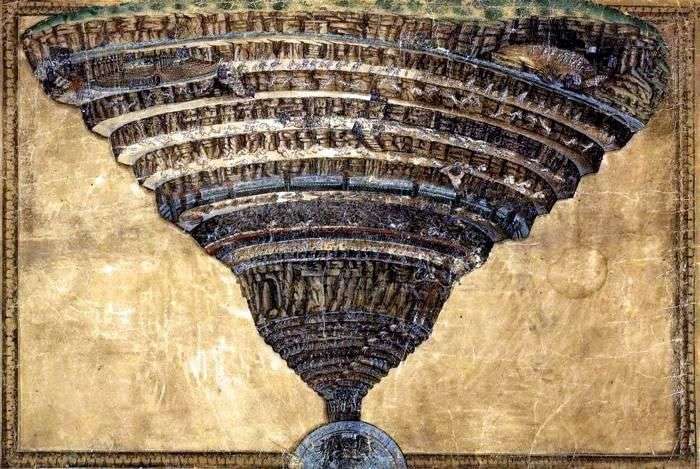
Sandro Botticelli – one of the greatest artists of Italy. Most people remember him as a representative of the Early Renaissance, famous for his bright canvases depicting young men and women of heavenly beauty. However, he also had dark pictures on religious topics. He was interested in the most terrible plot in Christian theology – Hell. Botticelli, whose painting on this subject is currently in the Vatican Library of Rome, finished writing it in 1480. Its full name is “The Abyss of Hell.” It was created by the artist as an illustration to the “Divine Comedy” of his great compatriot.
Giorgio Vasari, who gives us a lot of information about the biography of various artists, writes about the period in which the painter began to get carried away by such topics, the following. Alessandro was very famous for his works, and was invited by the Pope to Rome. There he earned a lot of money, but with the habit of a cheerful and carefree life, almost all of them spent and had to return home. In this regard, the artist was filled with profundity and became fond of reading Dante. He made several drawings illustrating the great work of the latter – “Divine Comedy”. At that time, he did not work for money, and, thus, he grew poorer. “Hell” Botticelli illustrated along with other parts of this work – “Paradise” and “Purgatory”. Approximately so it is possible to characterize history of creation of this drawing.
It is known that the artist is the author of several paintings based on the famous work of the stern Florentine. However, it is this color pattern on the parchment that is more famous than others, because it represents a kind of “adovaya card”. After all, Dante in his book described not only the sins and horrible tortures to which those who committed them were condemned. He created a kind of topography of Hell. According to the poet, the underworld consists of eight circles, and along the perimeter of the first of them flows the underground river Acheron. From it flows flowing into the fifth circle – the marshes of Stygia, where angry people are punished. Then it turns into a bloody river of Flegetton, and in the ninth circle – with the traitors – the waterfall crashes into the center of the earth and freezes. This icy abyss is called Kocit. This is how Hell looks. Botticelli,
The circles of Hell, described by the Florentine visionary, narrow. Therefore, the underworld is a kind of funnel, placed on the tip. He rests on the center of the earth, where Lucifer is imprisoned. As the author says, the deeper hell, the narrower the circle, the more terrible is the created sin. The most terrible criminals, according to Dante – are traitors. The artist in fairly detailed and carefully depicts all the places enumerated by the poet, where sinners are tormented and tormented. Other drawings, like the iconography of earlier times, show how Virgil and Dante visit that one and then another circle, and all of them, listed in the poem, stop.
Interestingly, this map, created by the painter, became very popular in the twentieth century. For example, the famous novelist Dan Brown, the author of the sensational “Da Vinci Code”, wrote another bestseller – Inferno. Botticelli, whose picture appears in this book as a kind of cipher, is done with the author’s light hand, the prophet. Like, his “map” indicates a way to “implement” a modified version of the underworld here and now. However, this novel, despite all its fantasticness, made many admirers of Brown look attentively at the drawing of the great Botticelli.
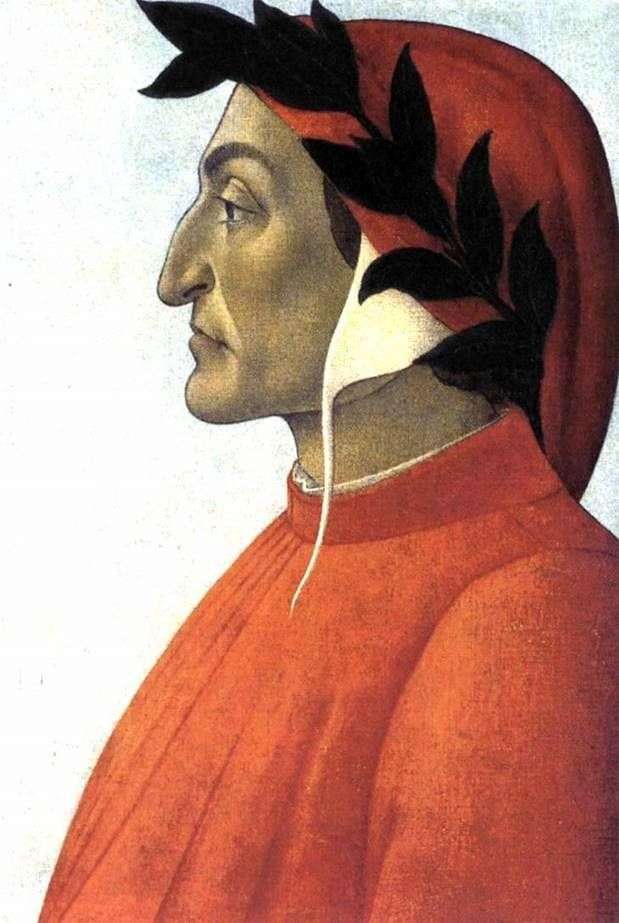 Portrait of Dante by Sandro Botticelli
Portrait of Dante by Sandro Botticelli Dante and Virgil in Hell by Adolf Bugero
Dante and Virgil in Hell by Adolf Bugero Punishment of Korea Dafan and Abiron by Sandro Botticelli
Punishment of Korea Dafan and Abiron by Sandro Botticelli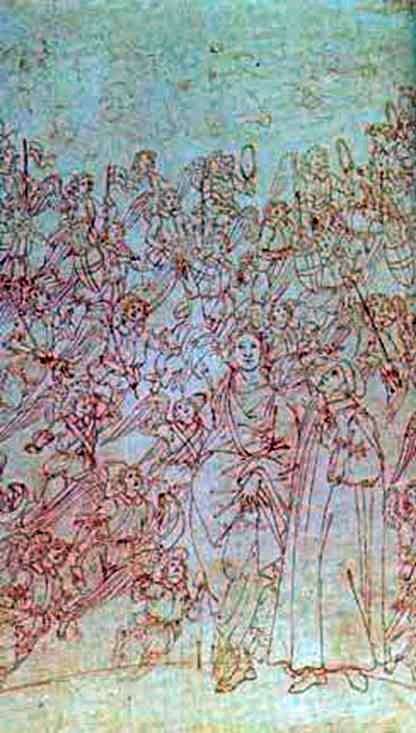 Dante and Beatrice, from the “Divine Comedy” by Sandro Botticelli
Dante and Beatrice, from the “Divine Comedy” by Sandro Botticelli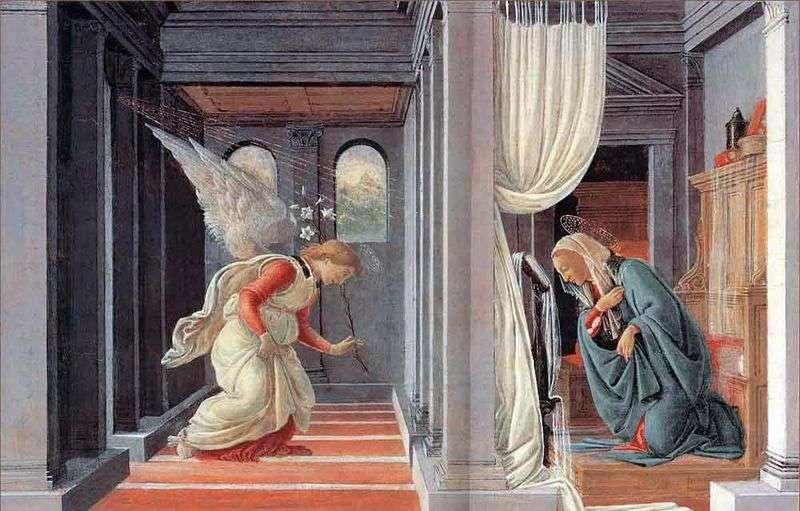 Annunciation by Sandro Botticelli
Annunciation by Sandro Botticelli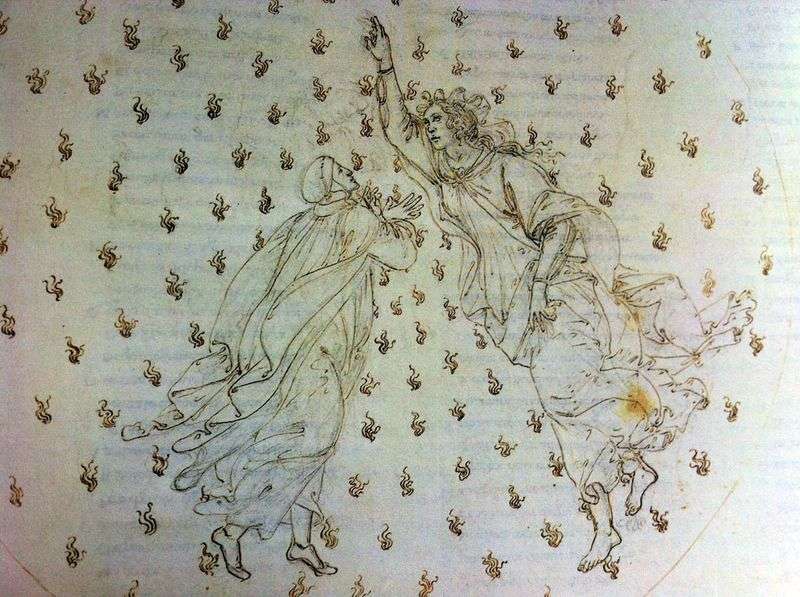 Paradise by Sandro Botticelli
Paradise by Sandro Botticelli Portrait of a young man by Sandro Botticelli
Portrait of a young man by Sandro Botticelli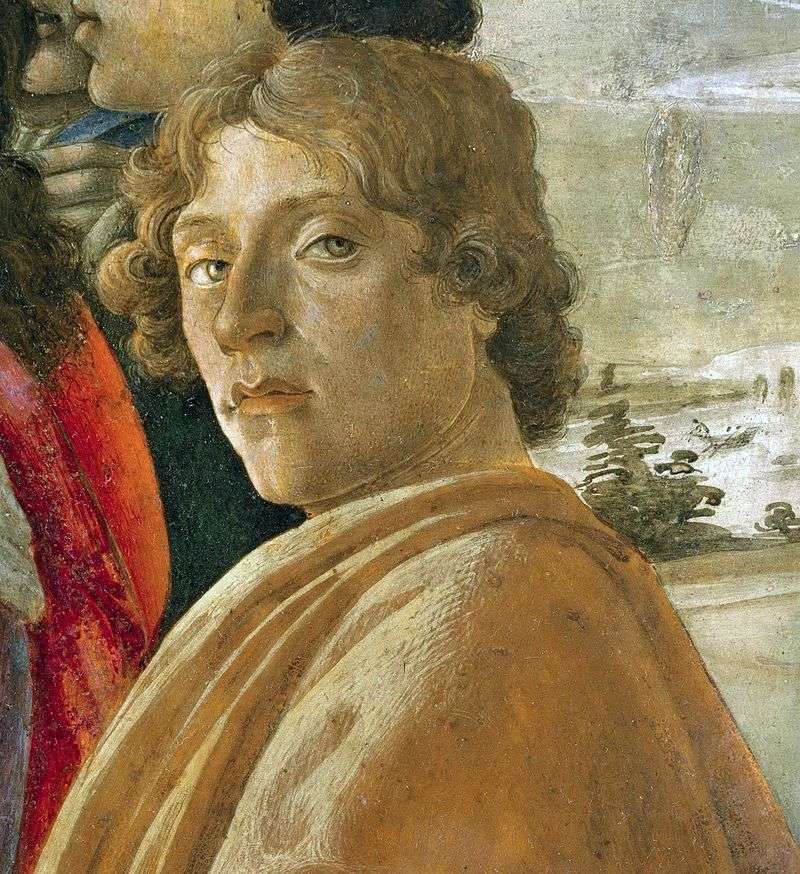 Self-portrait by Sandro Botticelli
Self-portrait by Sandro Botticelli